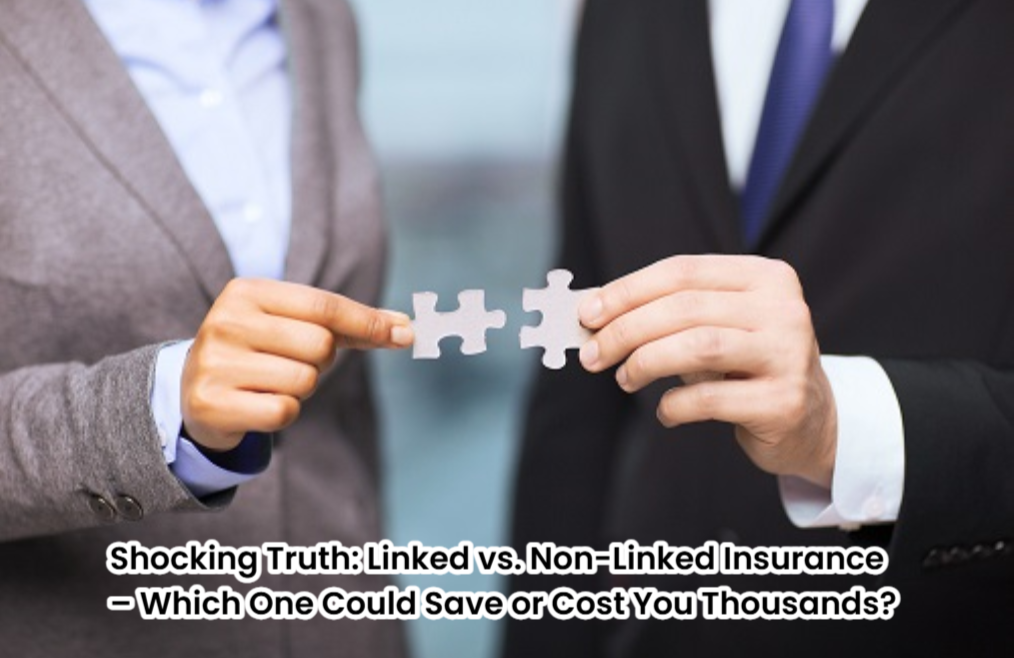The world has recently become more aware of the uncertainty of life, reinforcing the need for a solid insurance policy. While life itself is priceless, assigning a financial value to it is essential to ensure the well-being of those who depend on you. Investing in the right insurance plan is not just an option; it’s a necessity for securing your family’s future.
With a wide range of insurance plans available in the market, choosing the right one can feel overwhelming. The key is to pick a plan that meets your needs, offers the right features, and fits within your budget.
One of the major factors that differentiate insurance plans is whether they are linked or non-linked. These two categories define how your policy functions and the benefits you can expect. Linked insurance plans offer both coverage and investment options. Non-linked plans, on the other hand, provide a clear financial safety net.
Let’s dive into the details of linked and non-linked insurance plans and explore how they differ to help you make an informed decision.

What is a Non-Linked Insurance Policy?
Non-linked insurance plans are standard life insurance policies. They provide financial protection for your loved ones if you pass away unexpectedly. These policies aren’t linked to market changes, unlike investment-linked plans. This makes them a safe and reliable choice for policyholders.
These plans generally provide guaranteed benefits, including maturity payouts and bonuses. Some common types of non-linked insurance policies include:
- Term Insurance – Offers pure life coverage without any investment component.
- Endowment Plans – Combines life insurance with savings, providing maturity benefits.
- Money-Back Policies – Offers periodic payouts along with life coverage.
- Guaranteed Savings Plans – Provides assured returns along with life protection.
Non-linked plans are ideal for those who prioritize financial security over market-based returns.
What is a Linked Insurance Policy?
Linked insurance plans, also called insurance-cum-investment policies, offer life coverage. They also let you grow your wealth with market-linked investments. These policies invest a portion of your premium in various market instruments, such as equity and debt funds, based on your risk appetite.
The most popular linked insurance plan is the Unit Linked Insurance Plan (ULIP). It lets policyholders choose funds to invest in, all while providing life coverage.
Linked plans offer potential for higher returns, but they come with an element of risk due to market fluctuations. If you plan to invest for a long time and can handle market ups and downs, linked insurance policies can help you grow your wealth and secure your future.
Key Differences Between Linked and Non-Linked Insurance Plans
Here are some major differences between these two types of insurance plans:
Factor-Linked Insurance Plan vs Non-Linked Insurance Plan
- Market Dependency Returns depend on market performance. Not affected by market changes.
- Investment Component Includes an investment part. Only an insurance plan.
- Flexibility Choose funds based on risk. No investment choices allowed.
- Risk Level Higher risk due to market shifts. Low risk with guaranteed returns.
- Returns Market-linked, possibly higher returns. Fixed and guaranteed returns.
- Withdrawals Partial withdrawals allowed after a lock-in. Only surrender is possible.
- Loan Facility Not available. Offered in some non-linked plans.
- Premium Allocation Split between insurance and investment. Entire premium covers insurance benefits.
Which One Should You Choose?
Choosing a linked or non-linked insurance plan depends on your financial goals and how much risk you can take. Here’s how you can decide:
- If you are looking for a simple protection plan with guaranteed returns, a non-linked insurance plan is a safer bet. It ensures that your loved ones are financially secure without being affected by market fluctuations.
- If you want to combine life coverage with investment growth, a linked insurance plan like a ULIP might be a suitable option. It allows you to participate in market growth and build wealth over time.
- If you are a risk-averse individual, a non-linked plan is ideal as it offers predictable payouts without any market dependency.
- If you have a long-term financial goal and can handle some risk, linked plans can help you earn better returns. Plus, they offer life coverage.
Your choice should reflect your money goals, how much risk you can handle, and your future plans.
Final Thoughts
Both linked and non-linked insurance plans serve different financial purposes. Non-linked plans give security with guaranteed returns. Linked plans mix investment and insurance, helping to grow your wealth.
Before making a decision, assess your financial needs, risk tolerance, and long-term objectives. Talking to a financial expert can help you choose the best plan for your goals.
No matter which plan you choose, the most important step is getting insured to secure your family’s future and ensure financial peace of mind.
Must read:
- Shocking Truth: Unlock Instant Cash with a Loan Against Your Life Insurance Policy!
- Insurance vs. Assurance: The Shocking Truth That Could Save You Thousands!
- Warning: These 5 Home Renovations Could Skyrocket or Slash Your Insurance Costs!
FAQs
What is the main difference between linked and non-linked insurance policies?
Linked insurance policies have an investment part and offer returns tied to market performance. Non-linked policies, on the other hand, provide guaranteed benefits without market risks.
Can I switch funds in a linked insurance plan?
Yes, linked plans like ULIPs allow you to switch between different fund options based on market conditions and your risk appetite.
Is a non-linked plan better than a linked plan?
It depends on your financial goals. If you want guaranteed returns and financial security, go for a non-linked plan. If you seek investment growth along with insurance, a linked plan may be suitable.
Do linked insurance plans guarantee returns?
No, the returns in linked insurance plans depend on market performance and are not guaranteed.
Can I take a loan against my non-linked insurance policy?
Yes, certain non-linked insurance plans allow you to take a loan against the policy’s surrender value.